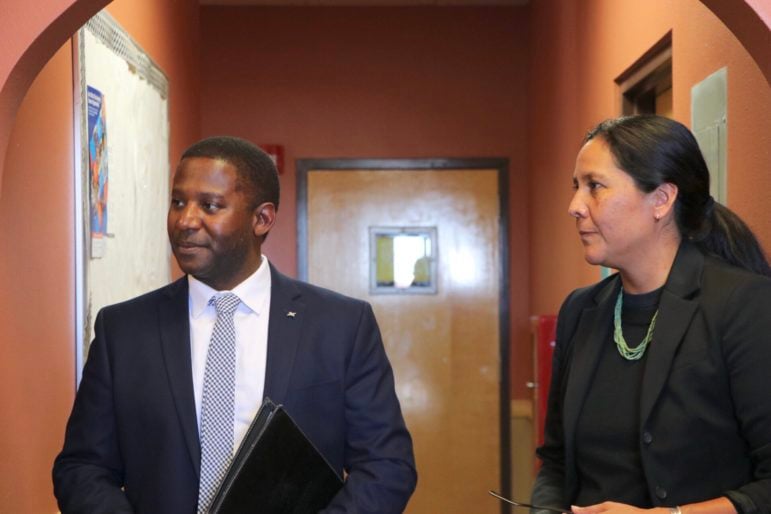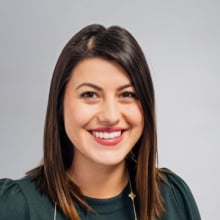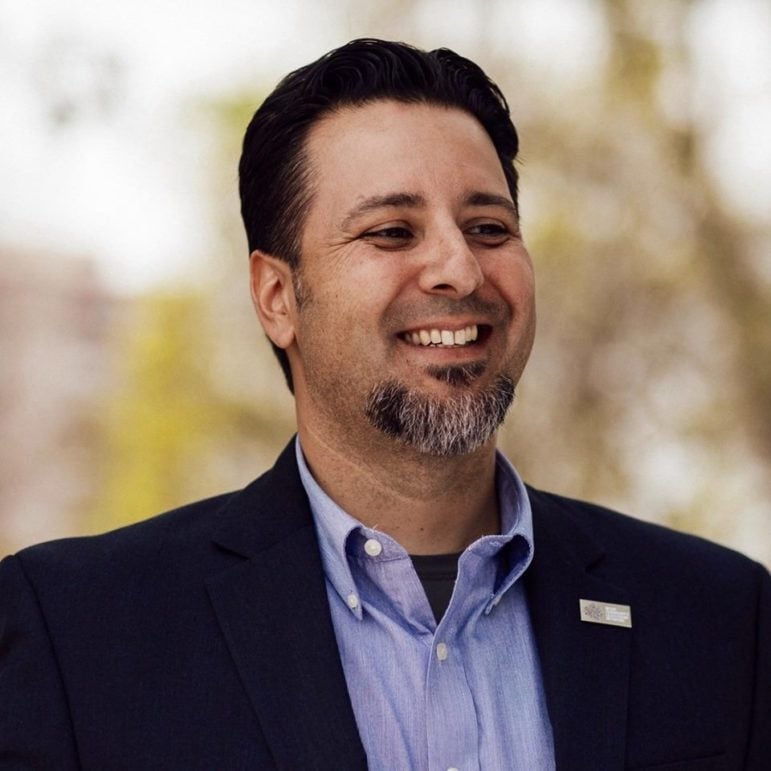
If classroom teachers and education advocates could sit down with new Education Secretary Ryan Stewart, they would tell him to just listen.
That’s the consistent message from two teachers at Las Cruces Public Schools – one who has taught for seven years, and another for 30 years, and two leaders of education nonprofits — one a member of the Transform Education New Mexico coalition of that formed out of the Yazzie Martinez education lawsuit, and another a former director of outreach in the Martinez administration’s Public Education Department.
Stewart, who is African American, and was the regional director of a nonprofit that works to improve education for low-income and minority students, takes the helm weeks after Gov. Michelle Lujan Grisham fired Karen Trujillo from the post after just six months on the job.
Without exception, everyone I spoke with wanted Stewart to know New Mexico and its complex history and cultures, and to visit and speak with people from rural New Mexico as well as its cities.
Stewart’s education experience is in low-income communities of color in the San Francisco Bay Area and Philadelphia.
New Mexico is not either of those places.
The vast expanses of New Mexico can comfortably hold the states of Pennsylvania, New York, New Jersey and Maryland, with their population of 47 million people. Compare that with New Mexico’s 2 million people, and school districts serving as few as 64 students and as many as 90,078.
While New Mexico’s school population is 61% Hispanic, the culture of many Spanish-descended students in the north don’t always track with Latinos in the south, who have closer cultural ties to the Mexico border. There are more than 20 tribal communities comprising 11% of state students, and those communities each have concrete ideas about the kind of education they want for their children.

“He obviously has experience as a minority. And I think that experience will provide value,” said Amanda Aragon of New Mexico KidsCan, a nonprofit education advocacy group founded in 2018 that prioritizes accountability, school choice and equitable funding. “But it is different than the experience that our children have. And that’s not different better, it’s not different worse. It’s different. I think more than anything what New Mexicans want to feel is heard and respected.”
Cheryl Carreon, who has been teaching developmentally delayed preschoolers for 30 years, and has seen education reforms come and go, draws a direct comparison between how her students’ lack of resources makes it tough for them to succeed — food, clothing, stable homes — and the lack of resources that public schools face that hinders teaching. There has been too few textbooks, not enough teacher training or money for effective programs.
“It’s a lot like what happens to a family that doesn’t have a car: So they can’t get to work, so that they can’t get a job, so they might be late to school,” Carreon said.
Lynn Community Middle School teacher Andrew Montoya said students, parents and teachers should be included in the process of transforming public education.
“Whenever you make any type of policy that affects what takes place in the classroom, I think student voice is paramount, as well as their family’s voice,” he said.
Montoya has a first- and third-grader at Desert Hills Elementary in Las Cruces. He got involved in bringing the community schools model to LCPS. This year he joined the staff after teaching high school social studies, history and ENLACE, which brings Latino students’ culture into the classroom and is starting the program to Lynn.
When education critics point to public school failures, he counters that programs like these improve achievement for low-income students. He’s proud that families can get help with groceries at his school, and that kids can get a warm coat in the community clothes closet.
“I love teaching history and social studies, but I think if I could inspire a student to think about education as a vehicle of transformation, that’s where my job lives. And I think that’s what Lynn is doing with that community school model,” he said.

Edward Tabet-Cubero of Learning Alliance New Mexico, a member of the Transform coalition, said a good place for Stewart to start his homework would be reading the 600-page findings of fact written by the late Judge Sarah Singleton, who presided over the lawsuit. It runs down the challenges and solutions to making education equitable for Native Americans, English learners, special education and low-income students.
Tabet-Cubero wants the secretary to know that many of the solutions to fix the education disparities Yazzie Martinez highlighted have been hashed out by the Transform Education NM coalition, and some are already being implemented by the current deputy secretaries at PED.
He believes Stewart has the skills to take New Mexico from its piecemeal approach to education reform and move it forward with a comprehensive plan for the future.
“If he leads with humility, along with his expertise, then I think it’s going to be a success,” Tabet Cubero said.
Aragon, of New Mexico KidsCAN, said New Mexico needs bold change but must be deliberate. There is already so much going on — the PED is choosing new standardized tests, and reworking teacher and school evaluations.
“The biggest mistake he can make is replicating the chaos of the last 10 years. I worked at PED, and I was incredibly proud of the work that we did, but it was a lot of change in a short amount of time,” she said.
Editor’s note: This post comes from New Mexico In Depth’s weekly newsletter. You can sign up to receive it and all our stories here.